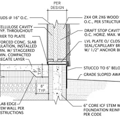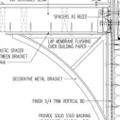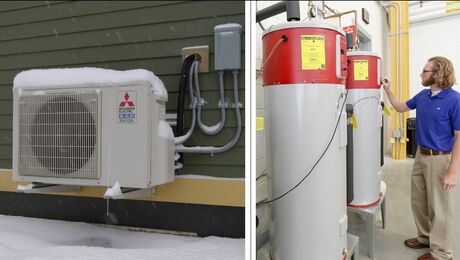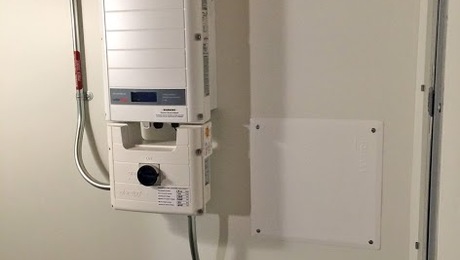Why not? Minisplit inline with ERV ducting
I am building a somewhat wide (70+ ft x 32ft) house and am thinking of running a minisplit inline with a erv. I saw it done by hammer and hand in their videos on the pumpkin ridge project. Has anyone else ever done this or know how or why not to do it?
GBA Detail Library
A collection of one thousand construction details organized by climate and house part









Replies
Andrew,
That YouTube video was unfortunately "all hat and no cattle." Unanswered questions include:
1. What was the source of the air that was introduced into the ducted minisplit air handler? Was it 100% outdoor air from the HRV, or was it a mixture of outdoor air and indoor air?
2. How many cfm did the ducted minisplit system require during heating or cooling mode, and what did the installers do to address the (likely) situation of the ducted minisplit needing more cfm than required for ventilation?
The basic problem with these schemes is that most single-family homes need about 50 cfm to 100 cfm for ventilation. This rate of air flow is too low to meet the heating and cooling needs of most homes. Some Passivhaus designers solve this problem by increasing air flow rates -- that is, overventilating. Overventilation may solve the heating problem, but it introduces a big energy penalty.
This type of system is usually (a) a compromise, or (b) complicated, or (c) a complicated compromise. It's almost always better to separate your heating system from your ventilation system.
I'm with Martin, if you have to ask... forget it.. keep it simple.
In heating mode a typical 1-ton mini-split on low fan speed delivers 150-250cfm of 110F+ air.
At high speed you're looking at 350-450cfm.
Using the same ducts for both heating/cooling and ventilation takes more design time (and design compromizes) that it's worth. You end up either oversizing the ventilation by a ridiculous factor, or cutting into mini-split efficiency. It can also cut in comfort:
In very temperate climates with reasonable outdoor humidity (dew point averages between 35F-55F year round) you can get away with oversizing the ventilation, but it's still not great. In other locations it'll either add a lot of latent cooling load in summer or dry out the air to unhealthy levels in winter (or both.) That sort of works in North Plains OR, where the Pumpkin Ridge Project is located, since the average mid-summer dew point averages 53F, and the mid-winter dew points run 36F, according to weatherspark.com datasets:
https://weatherspark.com/#!dashboard;a=USA/OR/North_Plains
our application is similar. we need a very small amount of heating and cooling (and dehumidification) in our earthsheltered house and are considering adding a heatpump unit to our existing erv ducting. please provide advice with specifics on equipment and installation.
Toddd,
What you are proposing is not going to happen unless you use something like a hydro air coil in your ducting.
Ducted mini split have very specific air flow requirements and usually won't match what your ERV is doing. It doesn't mean it can't be made to work, but it can't just be bolted in-line.
What you want instead is what we call a hybrid ducted setup. This is where you duct the fresh air feed from the ERV into the return of the air handler and you use a combination of the existing fresh air ducting plus maybe one or two extra registers as a supply. The air handler return also needs a duct or two to the house.
The idea here is that a good chunk of the air flowing through the ducted unit is from your ERV but if the ERV flow rate is low, it can use house air to make up for the difference. I have used this type of hybrid ducted setup, and it works very well since the ducted minis splits run their fan 24/7.